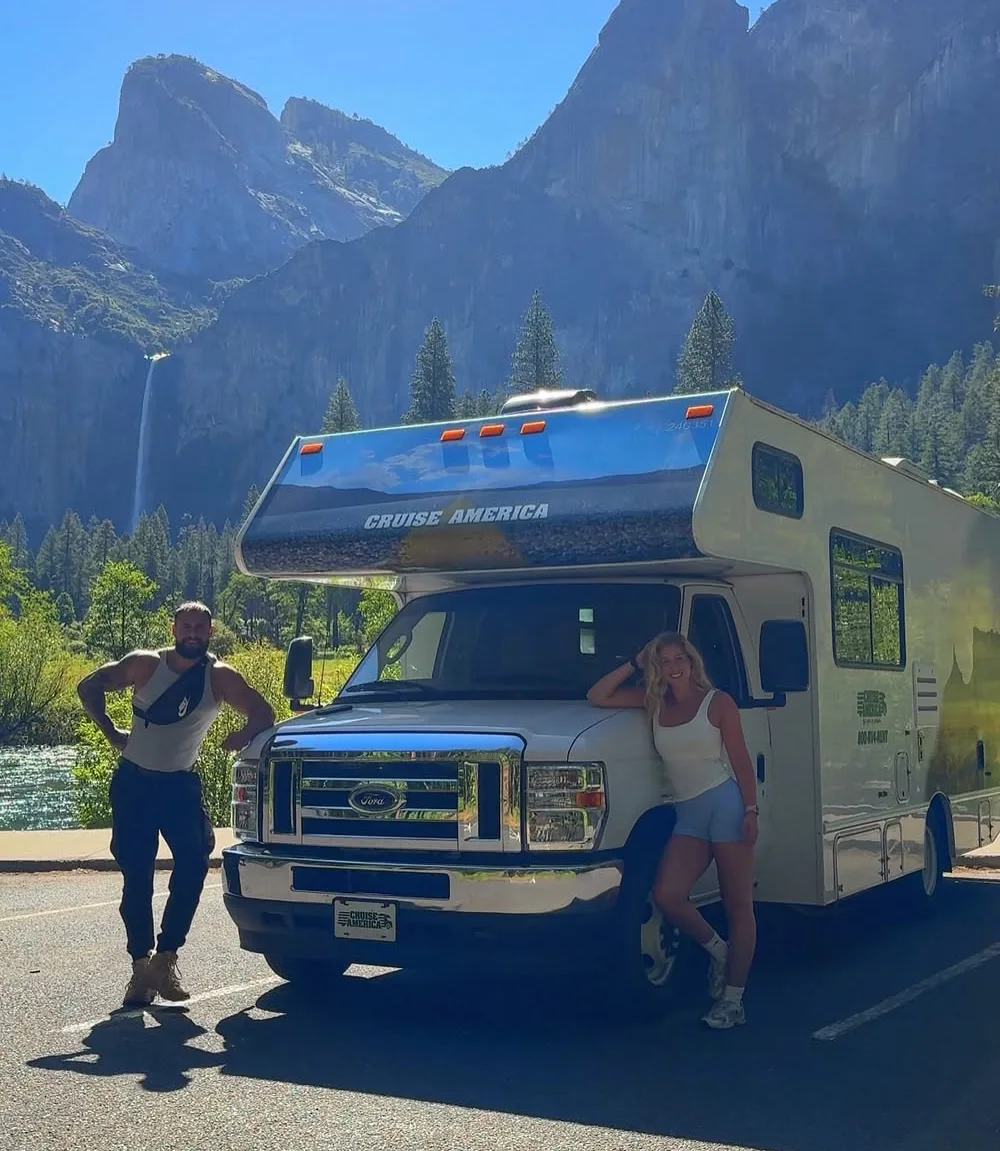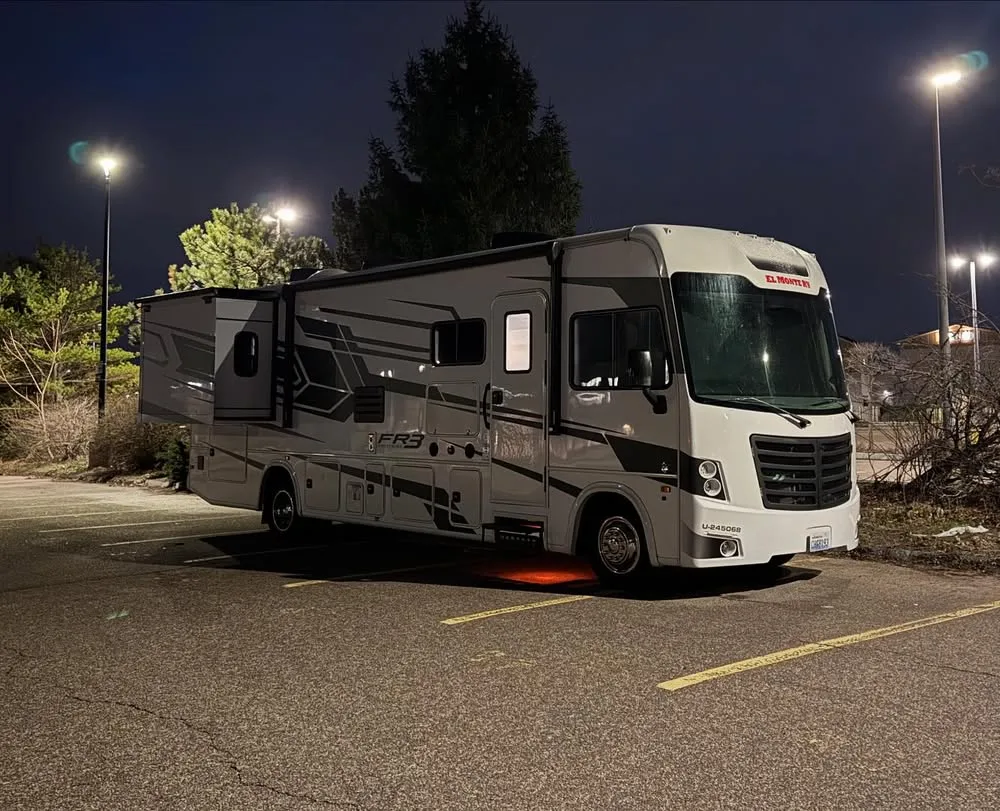After 730 days of waking up in different locations, experienced van lifers will tell you that van life Instagram posts don’t show the whole picture. Those curated sunrise shots and cozy interior photos are real, but they represent maybe 10% of the actual van life reality.
If you’re scrolling through #vanlife content dreaming of endless freedom and adventure, you’re probably not seeing the 3 AM panic attacks about where to park legally, the relationship fights in 70 square feet of space, or the $3,000 surprise repair bills that can derail entire budgets.
The glossy social media version of van life has created utopian expectations that leave many people unprepared for the genuine challenges of living in a van full-time.
This article reveals seven problems living in a van that nobody talks about, along with practical solutions learned through trial, error, and plenty of mistakes. These van life challenges aren’t meant to scare people away, but to help them prepare realistically for this lifestyle choice.
7 BRUTAL Van Life Challenges That Could RUIN Everything – What They’re HIDING From You

The Mental Health Toll of Constant Decision Fatigue

Sarah stared at her phone for three hours. Five apps were open. Three campgrounds were called. She still had no idea where she’d sleep. Panic was setting in. This is van life mental health reality. Every day starts with exhausting questions. Where can I park legally? How much gas is left? Where’s the nearest water?
Most people make 35,000 decisions daily. Van lifers double that of just surviving. The brain gets tired when every basic need requires planning. Simple tasks become major projects. Dumping waste means researching locations and planning routes. Getting water involves finding sources, testing quality. Nothing happens automatically.
The paradox hits hard – infinite freedom creates infinite stress. Traditional life runs on routines. Van life demands fresh choices constantly.
Social media makes it worse. Scrolling posts while sitting in Walmart parking lots creates toxic comparisons. Everyone else looks happy. The reality feels different. Social isolation makes decision fatigue worse. Campground conversations can’t replace real support systems.
Apps like Campendium help reduce some decisions. But technology can’t fix the deeper problem. Managing every life aspect in small spaces wears people down. Van life challenges mental health in unexpected ways. Many people aren’t prepared for this psychological toll.
Your Relationship Will Be Tested Like Never Before

The fight started over dirty dishes. Tom wanted to wash them at the rest stop. Lisa preferred waiting. In a house, someone could walk away. In their 70-square-foot van, nowhere to go.
Van life relationships face extreme pressure. Spending every hour together in a bathroom-sized space. Every habit gets magnified. Every mood affects the other person. Privacy disappears. Phone calls happen in front of each other. Bathroom breaks need coordination. One person’s sleep wakes the other.
Arguments have nowhere to go. No separate rooms. Conflicts must be resolved immediately or poison the space. This breaks up couples without strong communication. Financial stress makes things worse. Surprise repair bills cost thousands. Partners disagree about fixes. Money fights happen with no escape.
Research shows higher breakup rates in the first year. The lifestyle amplifies existing problems. Couples who struggle at home don’t improve on the road. Lack of personal space affects mental health. Some become overly dependent. Others feel suffocated and resentful.
Successful couples establish rules early. They have designated alone time, clear money agreements, and hand signals for needing space. Van life can strengthen relationships, but only if both learn new skills. Getting there requires more work than social media suggests.
The Hidden Costs Nobody Calculates

Jake’s face went white. Transmission replacement: $4,200. His van life budget had $800 left for the month. Van life costs always exceed estimates. Social media shows cheap living, but reality includes hidden expenses.
Vehicle maintenance hits three times harder. Van life vehicles carry maximum loads on rough roads daily. Parts wear out faster. Remote breakdowns cost double. Insurance gets complicated. Standard policies don’t cover full-time living. RV insurance costs more with restrictions.
Fuel expenses go beyond driving. Propane burns through tanks weekly. Generators run constantly. Winter heating exceeds $400 monthly. Emergency funds disappear fast. Hidden fees add up. Dump stations, water, propane, laundry, and showers. Combined, they eat budgets alive.
Average monthly expenses run $2,500-3,500, excluding van payments. This matches previous housing costs. Expected savings never materialize. Van expenses include restaurant meals, hotel rooms during extreme weather, storage units, and unlimited data plans.
Successful van lifers budget 30% more than estimates and keep six months of emergency funds.
Your Body Will Rebel Against the Space Constraints

Morning came with familiar pain shooting down Mark’s spine. Six months of sleeping in a bed too short had caught up with him. Getting dressed hunched over made everything worse.
Van life health problems start small but compound quickly. Human bodies aren’t designed for five-foot ceilings and convertible beds. Sleep suffers first. Van beds are shorter and narrower. Partners bump into each other nightly. Temperature control becomes impossible.
Chronic back and neck pain develops within weeks. Low ceilings force constant hunching. Converted furniture is not designed for extended use. Exercise routines fall apart. The couch-to-bed lifestyle reduces movement significantly.
Poor nutrition becomes unavoidable. Small refrigerators can’t hold fresh produce. Tiny stoves make cooking impossible. Storage means canned and processed foods. Remote work creates ergonomic nightmares. Laptop screens strain necks. Uncomfortable seating causes back problems. Poor lighting hurts eyes.
Physical challenges affect mental health. Chronic pain makes tasks harder. Limited mobility creates frustration. Equipment helps, but it can’t solve space problems. Better mattresses eat storage and budgets.
Van lifers who prioritize health from day one fare better.
The Loneliness Is Real, Even in Crowded Places

Amy sat in her van surrounded by hundreds of other vehicles at Quartzsite. The largest van life gathering in the country, and she felt completely alone. Everyone else seemed to know each other already.
Van life loneliness affects most people on the road. Moving constantly makes deep friendships nearly impossible. Maintaining existing relationships becomes extremely challenging.
Surface-level connections happen easily. Van lifers bond over shared experiences and help with problems. But relationships rarely develop beyond friendly interactions. People move on within days.
Practical barriers make the connection difficult. Limited internet makes video calls frustrating. There is no space to host gatherings. Constant movement prevents regular meetups. Social media makes loneliness worse. Scrolling through friends’ dinner parties while parked alone creates painful contrasts. Everyone else’s life looks full of connection.
Some report depression after six months. Initial excitement wears off, and isolation becomes dominant. Mental health support isn’t available in remote locations. Building genuine connections requires intentional effort and staying longer in locations. Successful van lifers join clubs, volunteer, or work seasonal jobs.
Van life social challenges can be overcome, but require much more work than traditional living.
Weather Becomes Your Worst Enemy or Best Friend

The temperature hit 115°F in Phoenix, and Rachel’s van felt like a deadly oven. Her air conditioner drained batteries in two hours. She had to choose between staying cool and having power.
Van life weather challenges go beyond being uncomfortable. Extreme temperatures can make van life dangerous without expensive climate control. Summer heat becomes brutal. Vans are metal boxes that trap heat. Interior temperatures reach 140°F or higher. Air conditioning requires expensive systems costing thousands.
Winter creates different problems. Condensation turns to ice on windows. Heating burns through propane fast. Water pipes freeze. Batteries lose capacity. Storm anxiety affects many van lifers. Lightning strikes become personal threats. High winds tip vehicles over. Flash floods trap vans.
Condensation plagues most vans. Cooking and breathing create moisture with nowhere to escape. This leads to mold and health problems. Seasonal migration becomes necessary. Following good weather means thousands of extra driving miles. Gas costs add up quickly.
Weather dictates daily schedules. Climate control costs more than budgeted. Quality systems start at $5,000. Monthly fuel can exceed $300. Hotels become expensive backups. Successful van lifers invest heavily in climate control from the beginning.
The Legal Gray Areas Will Stress You Out

The knock came at 2 AM. Flashlight beams swept the van windows. “You can’t sleep here,” the officer said. “Move along.” Sarah had researched parking laws for hours. She’d missed something.
Van life legal issues cause daily anxiety. Parking laws vary dramatically between cities and states. What’s legal one block away might result in expensive tickets. Constant fear of being asked to move creates chronic stress. Officers knock regularly, even when parked legally. Some interactions are friendly. Others involve threats or tickets.
Parking regulations change without notice. Cities pass ordinances targeting van life. Overnight parking is banned in previously allowed areas. Establishing legal residency creates complications. Taxes, voting, healthcare, and mail require physical addresses. Some states make residency extremely difficult.
Limited mail access becomes a challenge. General delivery isn’t reliable. Private services cost money and involve losing documents. Vehicle registration across state lines creates expensive headaches. Some states require inspections that converted vans can’t pass.
Insurance complications arise frequently. Some policies don’t cover residential living. Claims get denied after discovering van life usage. Successful van lifers research legal requirements obsessively and budget for compliance costs.
The Bottom Line on Van Life Reality
Van life can work for some people. But it’s not the Instagram fantasy most expect. The seven challenges covered here affect almost everyone living on the road full-time. Decision fatigue wears down mental health. Relationships get tested in unimaginable ways. Costs pile up faster than budgets allow.
Many challenges have practical solutions if people know what’s coming. Better budgeting absorbs surprise costs. Communication skills work in small spaces. Health planning prevents problems. Legal research reduces stress.
Smart potential van lifers test the lifestyle first. Rent a van for a month. Try living in 70 square feet at home for weeks. Talk to people who’ve lived in a van for years. Van life reality includes amazing sunrises and 2 AM police knocks. Instagram moments and expensive breakdowns. Freedom and constant decision-making.
The lifestyle works best for people who enjoy problem-solving, handle uncertainty, and don’t mind giving up traditional comforts. Going in prepared is better than learning expensive lessons on the road.
